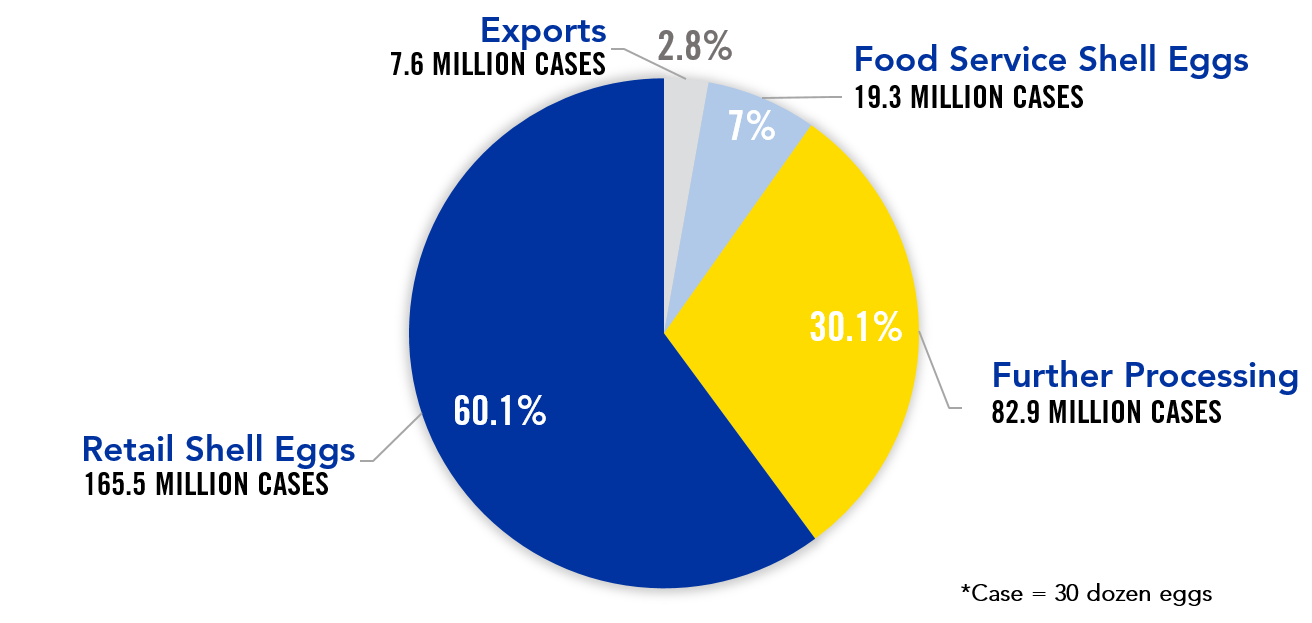The Chicken or the Egg? The Untold Story during a Pandemic
The Chicken or the Egg? The Untold Story during a Pandemic

Most people are familiar with the age-old question, which came first, the chicken or the egg? During a nationwide pandemic, which left the grocery shelf first, the chicken or the egg? While consumers across the country began "panic buying" during the onset of COVID-19, all protein sources were limited. The food industry's just-in-time supply chain model strained which left shelves empty at the grocery store. However, eggs are unique when compared to all other sources of protein.
Eggs are inexpensive, but unlike beef, pork, and chicken, eggs are perishable with no real substitutes. The surge in home baking had consumers purchasing eggs to make bread, muffins, etc. Ground beef does not substitute for eggs! Since eggs are in over 90% of household refrigerators in the U.S., the majority of eggs produced go to retail for purchasing at grocery stores. Figure 1 illustrates that 60% of the eggs produced in the U.S. go to retail as shell eggs. Unlike other protein sources, only 7% goes to the foodservice industry as a shell egg. For comparison, 45% of the chicken produced in the U.S. goes to the foodservice industry.
Figure 1. U.S.-Produced Egg Utilization

Source: United Egg Producers & 2019 USDA AMS
Roughly 30% of the eggs produced are further processed, typically as liquid eggs. Therefore, with "panic buying" seen during the onset of COVID-19, only 7% of the eggs produced were available to divert into the retail sector to meet consumer demand. However, regulatory standards hindered this process. In addition to a demand shock and limited flexibility in the egg supply chain, there was a packaging shortage. The traditional dozen-egg carton could not meet the shift from food service to retail. Consumers saw packaged eggs (if they were on the self) in large quantities (e.g., four dozen cartons) initially intended for the foodservice industry.
With a surge in demand and a supply chain that could not adjust quickly, prices at the wholesale level for eggs skyrocketed. Unlike all other proteins, which saw a decrease in prices at the wholesale level, egg prices peaked in the first week of April, which were 250% higher than in 2019 (Figure 2). While wholesale prices increased drastically, many consumers did not see this price spike at the retail level. What most consumers experienced at large package stores (e.g., Kroger, Walmart, etc.) were eggs prices at pre-pandemic levels or no eggs at all. Why did this occur? Typically, there is a lag between wholesale and retail prices due to contract arrangements. More importantly, eggs are a loss leader for most large package stores. A loss leader product is a marketing strategy where a store sells a product at a price that is below cost to entice customers to their store. This strategy is why eggs are at the back of the grocery store to encourage impulse buying when walking by other, more profitable products on the shelf.
Figure 2. Weekly 2020 price change in Grade A large egg prices compared to the same week in 2019

Source: USDA-AMS, USDA-NASS, & Livestock Marketing Information Center
It took the egg industry 14 weeks for processing/packaging facilities to adjust so that wholesale egg prices lowered to prices seen the same week in 2019. However, wholesale egg prices have been on the rise as the industry continues to manage through a pandemic and balance retail and foodservice distribution across the country. Therefore, what have we learned during a worldwide pandemic? The egg comes first (at least off the grocery shelf)!
Author(s) Contact Information:
